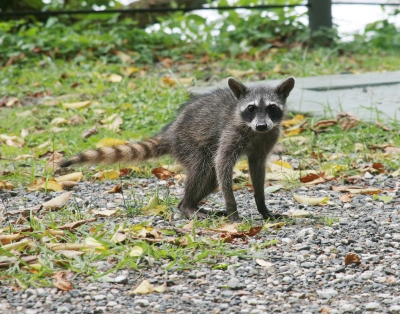Between urban sprawl and a decline in hunting, there’s been a dramatic proliferation of hungry animals in residential areas.
Aside from the destruction of your beloved gardens and expensive plants, wildlife often roll into town with parasites like ticks that carry Lyme disease.
Smart, determined and most of all hungry, animals are likely to test any preventative boundaries you put in place. For this reason, most experts recommend layering a variety of deterrents. However, before you can implement the right techniques, you need to know what type of critter you’re dealing with.
Below are some guidelines to help you pinpoint your particular brand of vermin and some at home tactics you can use to humanely discourage them.

Identifying Your Interloper
The best course of action largely depends on which breed of wildlife has come sniffing around your property.
Fortunately, all you need is to look at the issues you’re experiencing to identify your culprit. Some examples include:
- Hoof tracks are a clear indicator of deer, but your biggest tell is damage to the most tender parts of your plants like the buds and leaves.
- If it’s your birdseed that’s under attack, squirrels are the most likely offender. Be sure to address this quickly before they cause serious damage seeking out shelter in your wood siding.
- When you find your flowerpots are tipped over or trashcans ravaged, all signs point to Raccoons.
- Rabbits are known for creating clean, angled teeth marks on stems and leaves.
Reduction Tactics
Food, water, and shelter from the elements are likely drawing animals to your premises. If you’re looking for some humane methods you can use at home, try these 8 deterrents:
- Clean up excess birdseed and feed as it falls. Leaving it will only further entice squirrels and chipmunks.
- Pick and bring in ripe fruit as soon as possible.
This will keep it from attracting wildlife as it hits the ground.
- Tightly secure garbage can lids.
It can prevent raccoons from disrupting trash.
- Trim down overgrown branches and plants, especially those near the roof.
This will prevent wildlife from gaining easy access into your attic.
- Spray a natural repellent mixture.
Ingredients like salad oil, garlic, horseradish, eggs and cayenne pepper are common. The smell will keep critters away while its coating on leaves will leave plants unpalatable.
- Build a barrier fence.
Keep in mind that deer can jump up to 8 feet high and rabbits can slip through narrow openings so build based on your individual need.
- Plant their least-favorite foods.
Plants and bulbs like snowdrop and daffodils have Lycorine, a toxic alkaloid that is inedible and slightly poisonous to most grazing mammals.
- Have your chimney capped.
It will keep unwanted pest such as birds, bats, and raccoons from taking up residence there.
In the end, determining what wildlife you’re up against and plotting an appropriate course of action can all be done easily and naturally at home.
However, if you suspect you’re too late and a critter already resides or has died in your home, contact the humane professionals at Chimney and Wildlife Specialists.






